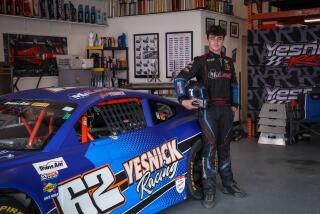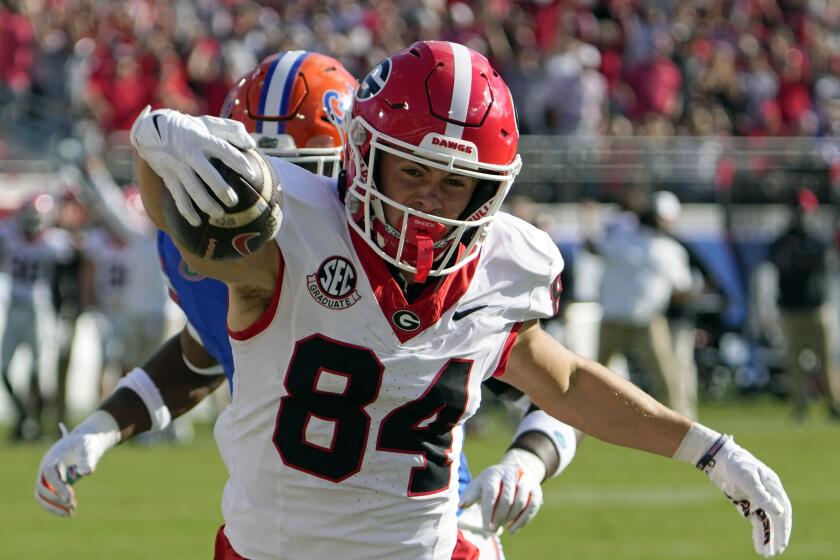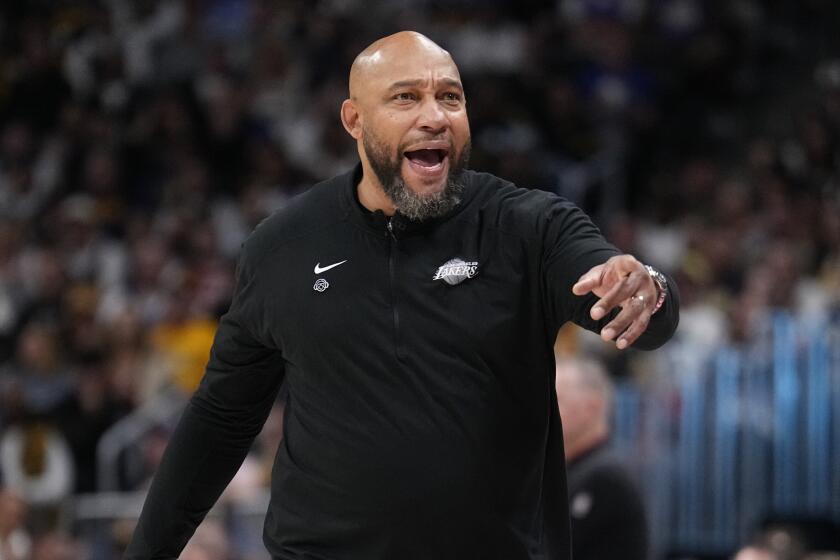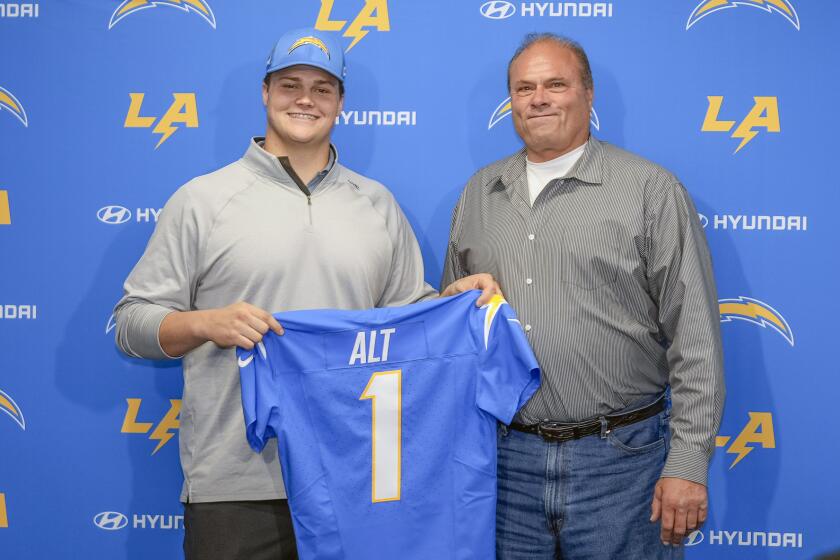IndyCar boss faces scrutiny after death of Dan Wheldon
After watching the horrifying crash that killed IndyCar driver Dan Wheldon, some quickly shifted their sights to a 44-year-old Californian: Randy Bernard.
As chief executive of the Izod IndyCar Series, Bernard heavily promoted the race at Las Vegas Motor Speedway as a dazzling climax to his season-long bid to boost IndyCar’s sagging popularity.
Wheldon, in fact, entered the race in hopes of capturing a $5-million first-place prize — to be split with a randomly selected fan — that Bernard and IndyCar sponsors offered a driver who wasn’t a regular on the IndyCar circuit.
The 15-car wreck and Wheldon’s death on Oct. 16 instead sparked widespread finger-pointing, some directly at Bernard, that race conditions were too risky even by motor racing standards.
One website columnist wrote that it “seems almost criminal.” Bernard was “inundated with hate mail,” Speedtv.com reported. Bernard’s contest was variously called a “stunt,” a “gimmick” and a “desperate” move that had no place in a dangerous sport.
But as IndyCar began an investigation into the crash, others said neither Bernard nor his promotion was the culprit, although safety changes should be addressed.
“The blame game needs to stop so the energy can be turned toward learning from this incident and making the sport safer and stronger,” said Gillian Zucker, president of Auto Club Speedway in Fontana, who attended the fatal Las Vegas race.
The race featured a relatively high 34 Indy cars racing at more than 220 mph around the relatively small, 1.5-mile Las Vegas oval that also has highly banked corners. The famed Indianapolis Motor Speedway is a rectangular oval but 2.5 miles long with flatter corners.
The crash occurred early in the race when the cars were in a close pack. Wheldon was running 25th when the accident started in front of him, and the Englishman was unable to avoid the chain reaction.
Two-time NASCAR stock car champion Tony Stewart, a former champion in Indy-style racing as well, said, “Randy Bernard has been getting beat up over it and he shouldn’t.”
Stewart, speaking to reporters Friday at Talladega (Ala.) Superspeedway, added, “Racing has always been dangerous. I think everybody has got to take a deep breath and let the emotions settle down.”
Bernard declined to be interviewed for this story. But he told the Associated Press last week that “the first thing we have to do is take care of the Wheldon family” and that “this was a tragic accident and IndyCar needs to understand everything possible about it.”
Wheldon’s funeral was Saturday and a public memorial was held Sunday in Indianapolis, where his fellow drivers and others in the IndyCar community remembered him with stories and music.
Hired by IndyCar early last year, Bernard had spent 15 years as chief executive of Professional Bull Riders Inc., expanding that sport’s popularity and TV presence.
Bernard acknowledged he was not an auto racing expert but said his main job was promotion. “I’ve got to move the dial,” he told The Times last April, especially after IndyCar’s popularity suffered badly during a 12-year civil war between its teams that ended in 2008.
So taking a page from NASCAR, he introduced “double-file restarts,” in which the cars resume racing side by side after caution periods instead of single file, adding excitement and the danger of wrecks.
Bernard also offered the $5-million prize to a non-IndyCar driver who could win the Las Vegas race. When he failed to secure a big name from NASCAR or elsewhere, the contest was changed to include Wheldon, 33, who won his second Indianapolis 500 this year but did not have a full-time ride.
Bernard and IndyCar also planned to introduce a safer car next season, a car Wheldon had been testing for the series.
IndyCar has used the same open-cockpit car design for several years. Indy cars are more aerodynamic and lighter (about 1,560 pounds) than NASCAR stock cars (3,400 pounds), which also have roofs and fenders. The cars in Formula One, another major “open-wheel” series, weigh roughly 1,400 pounds.
Bernard worked for months to make the Las Vegas race a hit and generate momentum heading into next season. But now he must grapple with a fresh blow to the series’ prospects on top of the problems he already had.
For instance, the popular Danica Patrick concluded her full-time IndyCar driving career at Las Vegas and is moving to NASCAR. (Patrick wasn’t involved in the big wreck.)
IndyCar’s attendance and TV ratings also remain weak outside of the celebrated Indy 500, with most of its 17 races — run on both oval tracks and curvy road and street circuits — shown on the lightly watched Versus cable channel.
Ratings of Versus-carried IndyCar races showed little improvement this year compared with 2010; most averaged a 0.4 rating or lower, according to Nielsen. By contrast, most NASCAR races average 3.0 or higher.
The Las Vegas race, shown on ABC, drew a 1.6 rating (or 1.8 million homes) — second-highest in IndyCar’s season behind the Indy 500’s 4.0 rating — but obviously not for the reasons IndyCar had hoped. Wheldon was killed early in the race and the telecast continued for two more hours.
Now, the racing world is waiting to hear what changes Bernard and IndyCar will make after Wheldon’s death.
“The real message that needs to be loud and clear is we have to eliminate pack racing with open-wheel cars” because “that is not safe,” said Jim Michaelian, who runs the Toyota Grand Prix of Long Beach, an IndyCar street race.
But Michaelian, who also witnessed the Wheldon crash, said that “to ascribe blame in any way to Randy [Bernard] for what transpired in that tragic incident in Las Vegas I think is unfair.”
More to Read
Get our high school sports newsletter
Prep Rally is devoted to the SoCal high school sports experience, bringing you scores, stories and a behind-the-scenes look at what makes prep sports so popular.
You may occasionally receive promotional content from the Los Angeles Times.






